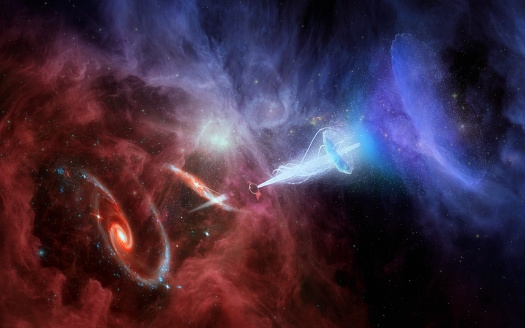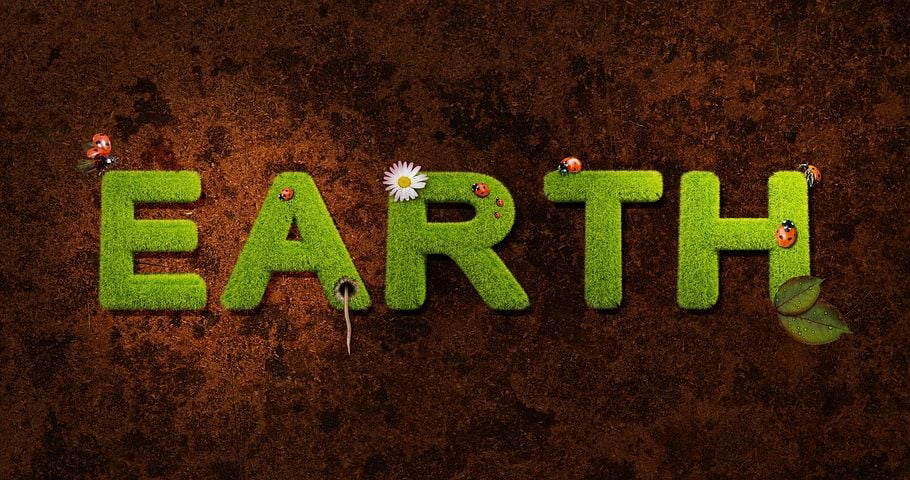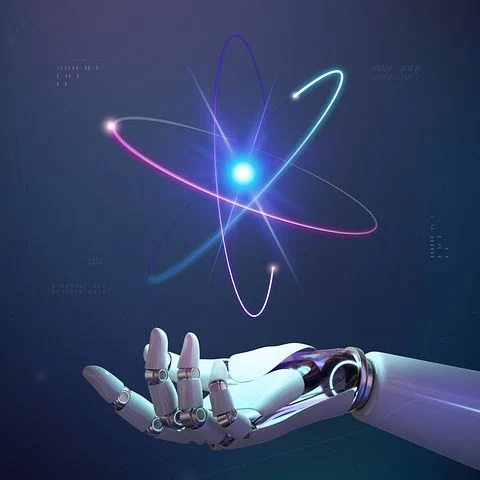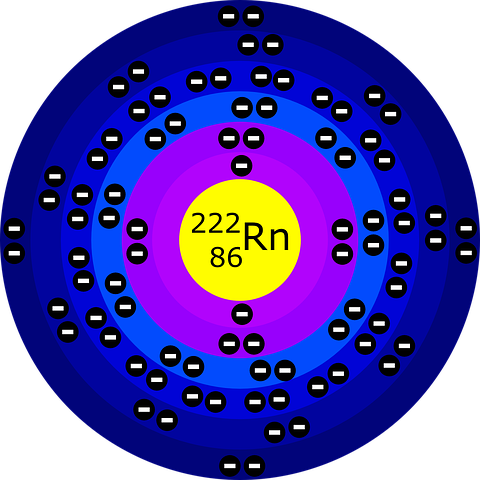Tuesday, April 4, 2023
The Hostory of the Earth
Theory of Relativity
History of Atom
The concept of the atom, as the smallest building block of matter, has a long and fascinating history. Here is a brief overview:
SPACE DEBRIS
ANTIMATTER
RADIOACTIVE ☢ ☢
Monday, April 3, 2023
NANOPARTICLES
Monday, June 7, 2021
वन्स अपॉन अ टाईम इन ड्रीम
ONCE UPON A TIME IN DREAM
( SHORT MARATHI IMAGINARY STORY )
वन्स अपाॅन अ टाईम इन ड्रिम
( एक काल्पनिक कहाणी )
वन्स अपॉन अ टाईम इन ड्रीम
प्रमुख काल्पनिक पात्र- योगेश - योगिता
सदर कथा ही प्रेरणादायी प्रेमकथा असून ह्याचा कोणत्याही जीवास संबंध नाही. अशी पात्र आढळूत आल्यास तो योगायोग समजावा.
दिनांक 5 जून 2021 ची रात्र. त्या रात्री पाऊस होता. वातावरणात अगदी प्रसन्नता होती. विजांचा कडकडाट तसेच ढगांची गर्जना. मंद वारा वाहात होता. वाऱ्याची ऋदयस्पर्शी लहर काळजात हात घालत होती. वारा ही संथ गतीने वाहत होता.
" वाऱ्याची हृदयस्पर्शी लहर
अंगावरील एक शहारा
पावसाची कहर
आणि मंद वारा "
असं ते संध्याकाळी रात्रीचे मंगलमय वातावरण. योगेश आणि त्यांच्या घरचे सर्वजण झोपलेले होते. योगेशनेही आपली दैनंदिनी लिहून झोपायची तयारी केली होती. अंथरुणावर पडताच कधी गाढ झोप लागली कळलेच नाही. दिवसभर क्रिकेट खेळून त्यालाही आता विश्रांतीची गरज होती. रात्र सरत होती. त्या रात्री पहिल्यांदा त्याला असं अनेक स्वप्नांनी घेरलेलं होतं. पण, तो एका स्वप्नात खूपच रमून गेला होता. ते स्वप्न एक काल्पनिक प्रेम कहाणी आहे.
योगेश आणि योगिता हे दोघे एकमेकांना महाविद्यालयीन शिक्षणापासून ओळखत होते. दोघे एकाच कॉलेजमध्ये शिकत होते. त्यांच्या भेटीचाही योगायोगच होता. दोघांची चांगली ओळख झाली. एकमेकांचे विचार पटायला लागले. एकमेकांचा आदर, काळजी वाटायला लागली. दोघांची घट्ट मैत्री झाली. कधी त्या मैत्रीचा एकतर्फी प्रेमात रूपांतर झाले होते कळलेच नाही. काही ठराविक कालावधीतच त्यांच्या अशा असंख्य आंबट-गोड आठवणी तयार झाला. कधीकाळी रात्र-रात्रभर फोनवर बोलायचे तर कधी अबोला धरायचे. एके दिवशी अचानक त्यांचे भांडण झाले. एकमेकांनी नंबर डिलीट करून टाकले. दोघेही एकटे पडलेले. आता त्यांची पुन्हा भेट होणं म्हणजे योगायोगाचा खेळच. कारण दोघेही आपल्या मतांवर ठाम होते. परंतु काही दिवसांनी ते दोघे भेटले. खूप गप्पा मारल्या. एकत्र वेळ घालवला आणि पुन्हा आपल्या मार्गाला निघून गेले. असं नातं असेल तर त्यास मैत्री म्हणावी का?
अखेरीस कोरोना महामारीने थैमान घातल्यामुळे दोघेही शेकडो-शेकडो अंतराने आता दूर झालते. दोघांचाही हा अबोला जीवघेणा होता. पण, म्हणतात ना कोणाचं कोणावाचून नडत नाही. परंतु काही काळ त्यांना त्यांच्या आंबट-गोड आठवणींनी घायाळ करून टाकलेलं. खूप वर्षे उलटून गेली आता ते कदाचित एकमेकांना ओळखत नसत. आपापल्या आयुष्यात ते खूष होते. यशाची शिखरे सर करत होते. भूतकाळ विसरून भविष्याच्या विचारात अडकलेले.
अचानक एके दिवशी योगेशला योगिताच्या स्वप्नांनी घेरून टाकलेलं. खूप वर्षांनी योगिताचा त्याला कॉल आलता. योगिता आता योगेशच्या गावी काही कामानिमित्त येणार होती. योगिताने त्याला बस स्टँड वरती तिला घेऊन जाण्यासाठी बोलावलेलं. कदाचित हा योगायोग होता. योगितासाठी ते गाव नवीन होतं. तिच्यासाठी कुठे राहायचा हा देखील प्रश्न होता पण योगेशनेच योगिताला त्याच्या घरी थांबण्यास सांगितले. अखेरीस खूप वर्षांनी हजारो किलोमीटर वरून दोघे एकाच घरात आलते, एकाच छताखाली आलते.
योगिताच्या विचारांवर योगेशचे आई-वडील देखील खुप खुश होते. त्यांच्या गप्पा रंगायच्या परंतु योगेश आपल्याच नादात. तो पूर्णपणे तिला विसरून गेलता. आता योगिताला देखील योगेशचा बोलायला भीती वाटायची. त्याचा तो लालबुंद चेहरा पाहून योगिता जास्त काही बोलत नसे. पण, बोलण्याचा सतत प्रयत्न करायची. योगेश सतत तिच्याकडे दुर्लक्ष करायचा पण तिचं आई-वडिलांशी खूप जमायचं. काही दिवस उलटून गेले योगेशला पुन्हा ती परत आल्याचा त्रास होत होता. मात्र योगिता त्याच्यासमोर खूप वेळा रडली. ती तिच्या चुकीची माफी मागत होती. त्यांच्यात झालेले भांडण आणि मैत्रिणीबद्दल घरच्यांना जास्त काही माहित नव्हतं पण अचानक काही दिवसांच्या संभाषणावरून घरचे जाणून होते. योगिता स्वतःला झालेला पश्चाताप योगेशला सांगत होती. परंतु योगेशला ते एक नाटक वाटत होतं. ती योगेशला त्याच्या कामामध्ये मदत देखील करायची. आईला स्वयंपाकामध्ये मदत करायची. तशी ती हुशार आणि प्रेरणादायी होती.
योगिता योगेशचे तिच्याबद्दलचे विचार बदलण्यात अखेरीस अयशस्वी ठरली. तिने घरी सांगितले की माझं आता काम झाले आहे, मी निघते उद्या. आई-वडील राहण्यासाठी आग्रह करत होते. कदाचित तिचा स्वभाव सर्वांना आवडलेला. तिच्या विचाराने सर्वजण प्रेरित झालते पण तीनं कोणाचेच ऐकले नाही. दुसऱ्या दिवशी योगेश झोपत असतानाच ती आई-वडिलांचे आशीर्वाद घेऊन निघून गेली. उठल्यानंतर योगेश तिला शोधू लागला पण ती मात्र कुठेच दिसली नाही. कोणालाही न सांगता तो तिचं जिथं काम आहे तिथे जाऊन विचारपूस केली. पण, योगिता कोणत्या कामासाठी आलेली नव्हती. योगेशला काही मित्रांकडून कळलं की ती फक्त योगेशसाठीच आलती.
योगिता बस स्थानकावर पोहोचली. योगेशही तिला सर्वत्र शोधत-शोधत बस स्थानकावर पोहोचला. योगिताची परतीची बस आल्यामुळे ती बसमध्ये बसली. योगेश तिला सर्वच बसमध्ये शोधत होता. नेमकं ज्या बसमध्ये योगिता बसलेली त्या बसपर्यंत जाईपर्यंत ती बस काही अंतरावर निघून गेली. पण म्हणतात ना दोन व्यक्ती एकत्र येण्यासाठी नशीबही अडवू शकत नाही. तिथेही तसेच काही झालं आणि बस थांबवून तिथे योगेश ची एन्ट्री झाली. दोघेही खाली उतरले. काय बोलु एकमेकांना कळत नव्हतं. दोघेही नजाराही भिडवू शकत नव्हते.
अखेरीस दोघेही एकमेकांकडे पाहत मनसोक्त हसत होते. अचानक पाऊस चालू झाला. ते एका ठिकाणी थांबले आणि तो अबोला आता बोल अनुभवाच्या सारखा संपला होता. दोघे गप्पा मारत होते. दोघांनाही विश्वास बसत नव्हता आणि अखेरीस दोघे एकत्र झाले. खुल्या अंतकरणाने योगेशने योगीताला माफ केले.
स्वप्न पाहता पाहता कधी सकाळ झाली कळलेच नाही. हे पडलेले योगेशला काल्पनिक स्वप्न अस्वस्थ करत होतं. या स्वप्नातून तो बाहेर निघत नव्हता. पण त्याच्याकडे एकच पर्याय होता लेखन. आणि योगेश लिहू लागतो "वन्स अपॉन अ टाईम इन ड्रीम"
आझादी का अमृतमहोत्सव
"आझादी का अमृतमहोत्सव" म्हणजे भारताच्या स्वतंत्रतेच्या 75 व्या वर्षिकोत्सवाची स्मृतिमोहक आयोजना. या महोत्सवाच्या दरम्यान भारतीय स्...

-
"आझादी का अमृतमहोत्सव" म्हणजे भारताच्या स्वतंत्रतेच्या 75 व्या वर्षिकोत्सवाची स्मृतिमोहक आयोजना. या महोत्सवाच्या दरम्यान भारतीय स्...
-
Hiii, Before 19 day's, first time in life I bought a dragonfruit. It was quite healthy. It has lots of benefits 1) Rich in vitamins 2)...
-
Oxygen cost Oxygen is not a natural gas; rather, it is a naturally occurring element that is essential for life. While oxygen is abundant in...


























































